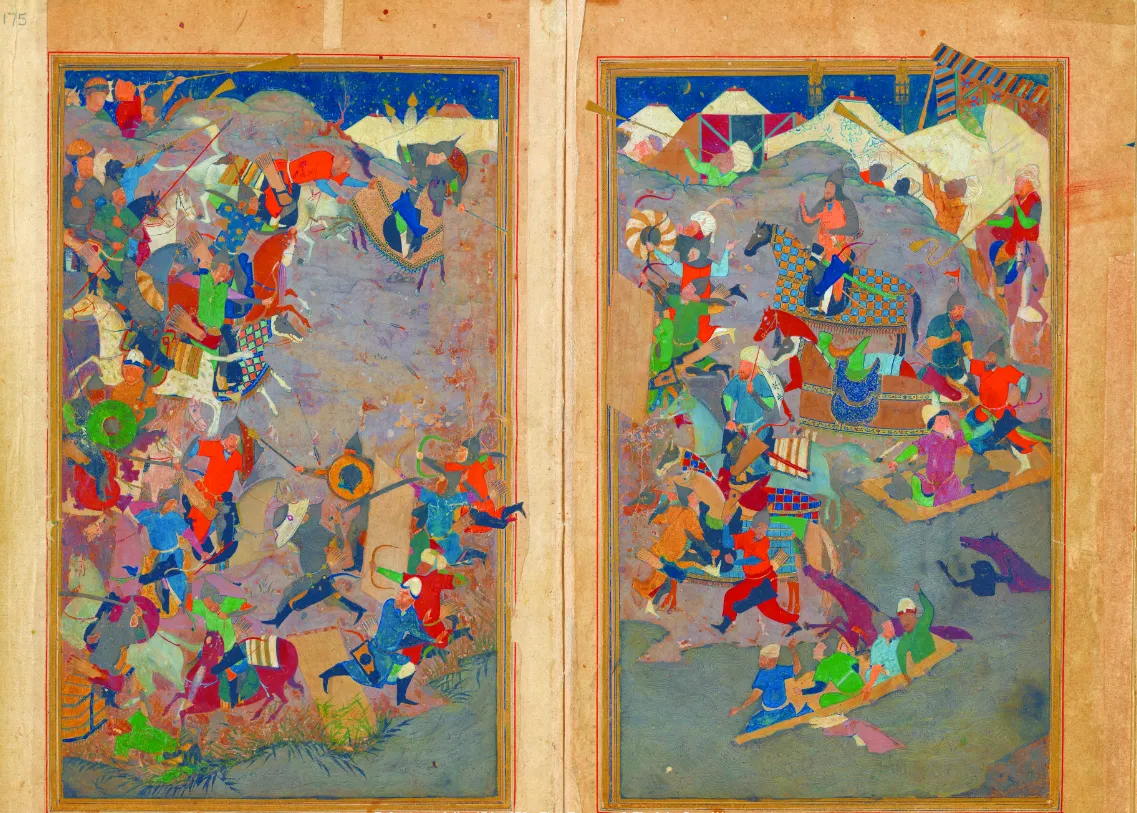His warriors, dismounted, swim across the Amu Darya on rafts, others shoot, defending themselves with huge wooden shields – chapars. Some of the soldiers have already got over to the shore and are attacking the enemy. The enemy army is stunned. Some are confused, others meet the enemy with dignity. The musicians trumpet the gathering, and the soldiers rush to join the battle.
These images are provided in the illustration entitled "Umar Sheikh attacks the army of Ankatura" by Kamal ad-din Behzad, nicknamed "Raphael of the East." This illustration is currently kept in the John W. Garrett Library located at Johns Hopkins University in Baltimore.
This double miniature illustrates the story of how the army of Umar Sheikh, who had set up camp on the banks of the Amu Darya, crossed the river at night and suddenly attacked the enemy on the opposite bank. It is not the event that is important to Behzad, but the story of the war. Savoring the details, the artist depicts how the warriors of Umar Sheikh are getting into makeshift rafts, while others are already sailing, struggling with the rushing current. To emphasize the complexity of the crossing, he chooses a point of view from above, which allows him to see the rapid flow of the river, the indented line of the coast, a raft with soldiers, horses immersed in the water up to their necks; one of the horses, frightened by the cold water, tries to get ashore and the foot warrior swings at it, wanting to return it to the water. On the next page is the soldiers who got out of the water violently attack the enemy, shoot from bows, hiding behind a raft pulled out of the river. The remarkable faces and gestures of the soldiers, and the various angles of animals give this scene a life-like authenticity, despite the conventional depiction of space, nature and man.
You can learn more about the topic in the book-album "The legacy of Kamal ud-din Behzad in the World Collections" (L volume) in the series "Cultural Legacy of Uzbekistan in the World Collections".
The main sponsor of the project is the oilfield services company Eriell-Group.
Main page//Another rare work of "Raphael of the East" by Kamal ad-din Behzad stored in the library of John W. Garrett
Another rare work of "Raphael of the East" by Kamal ad-din Behzad stored in the library of John W. Garrett
It was the night. They lit torches and the musicians trumpet the attack. Umar Sheikh leads the army, riding an armored horse.
